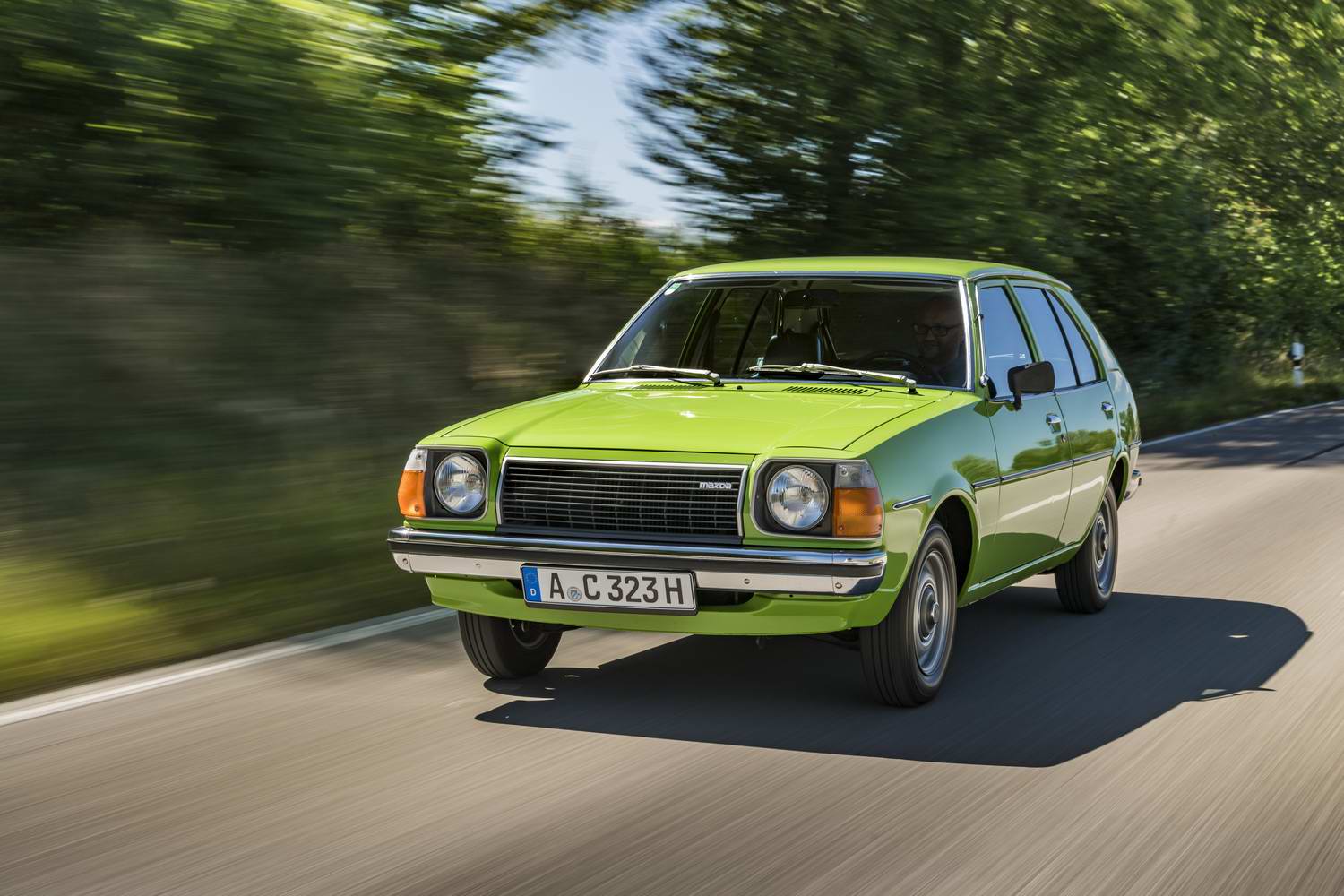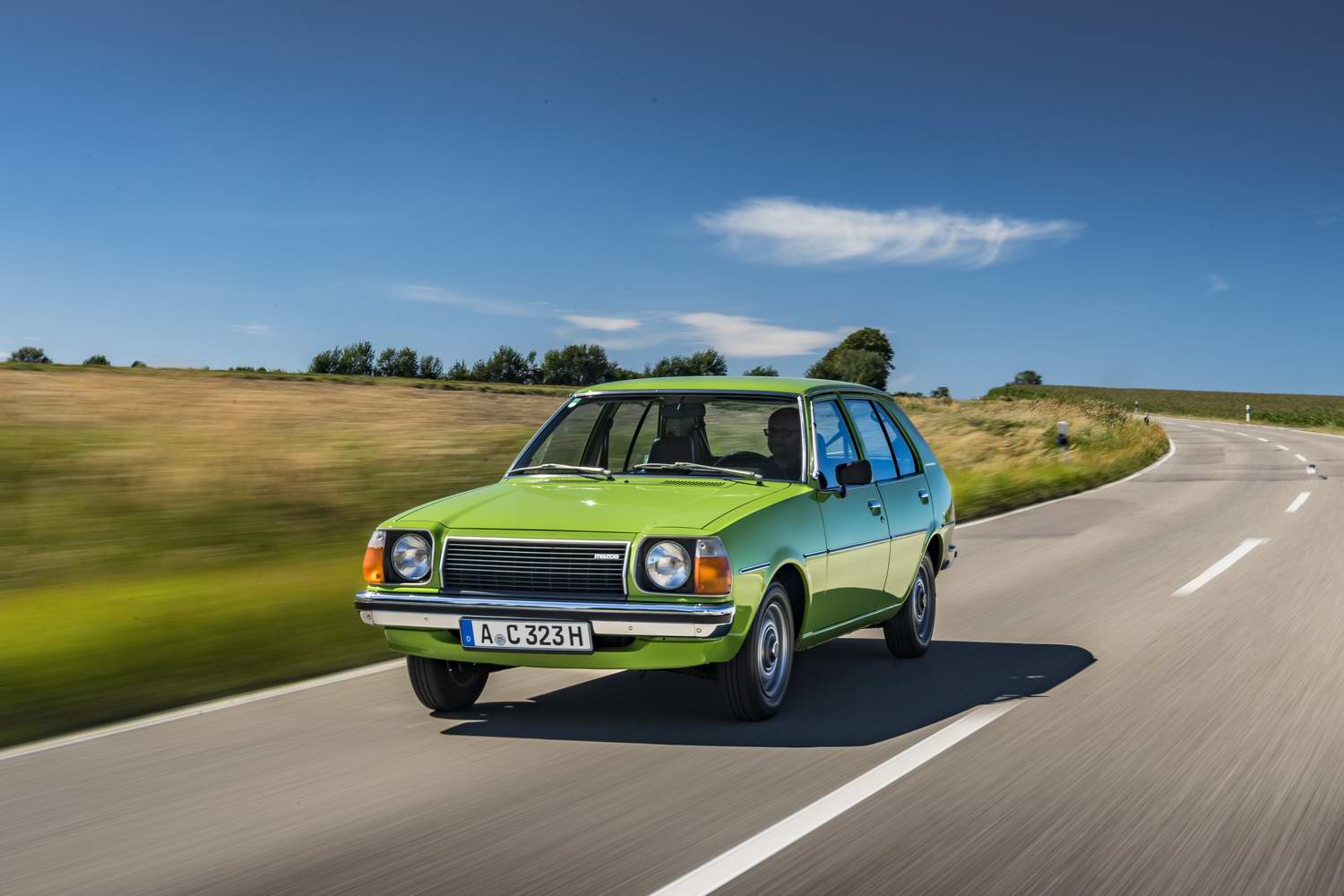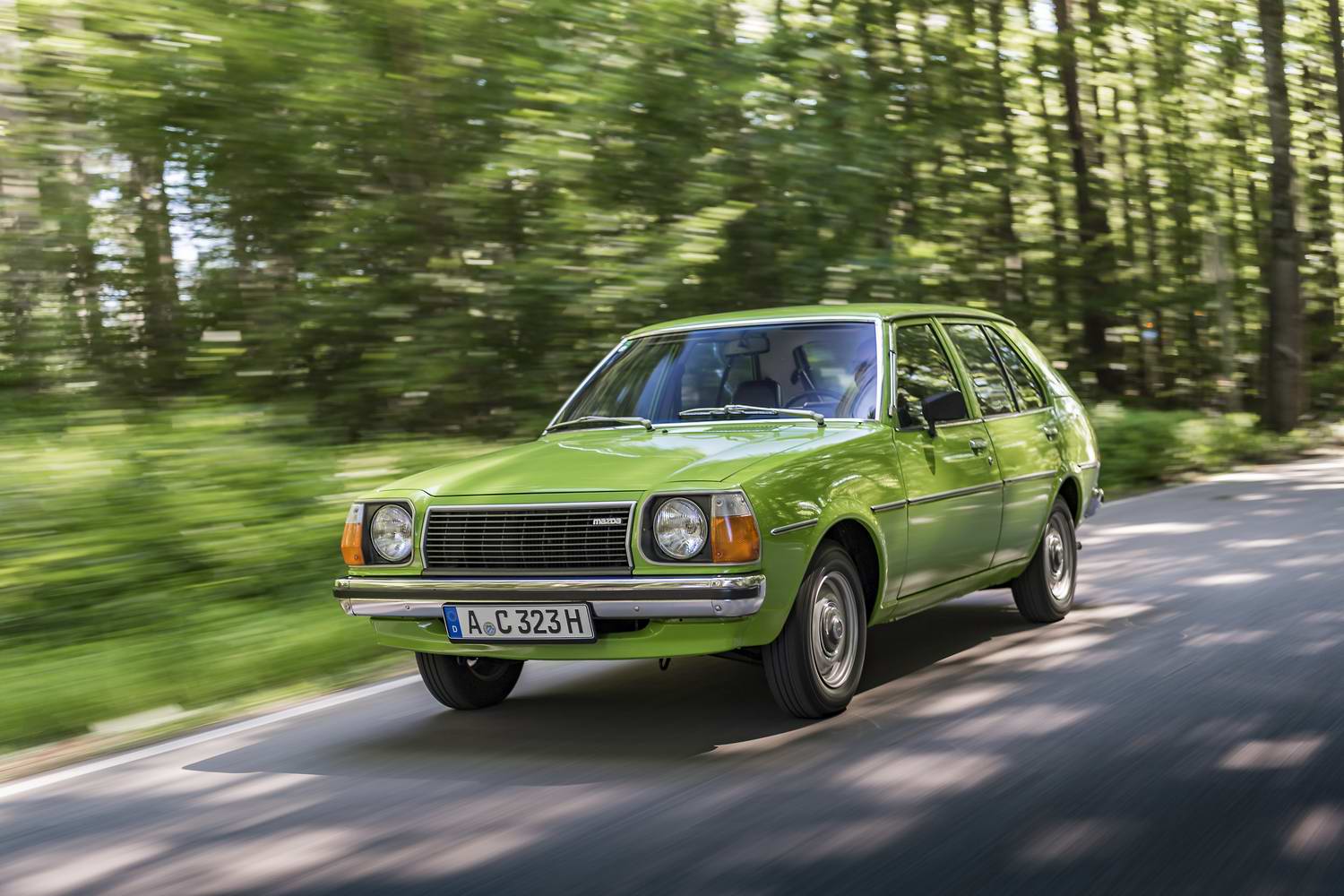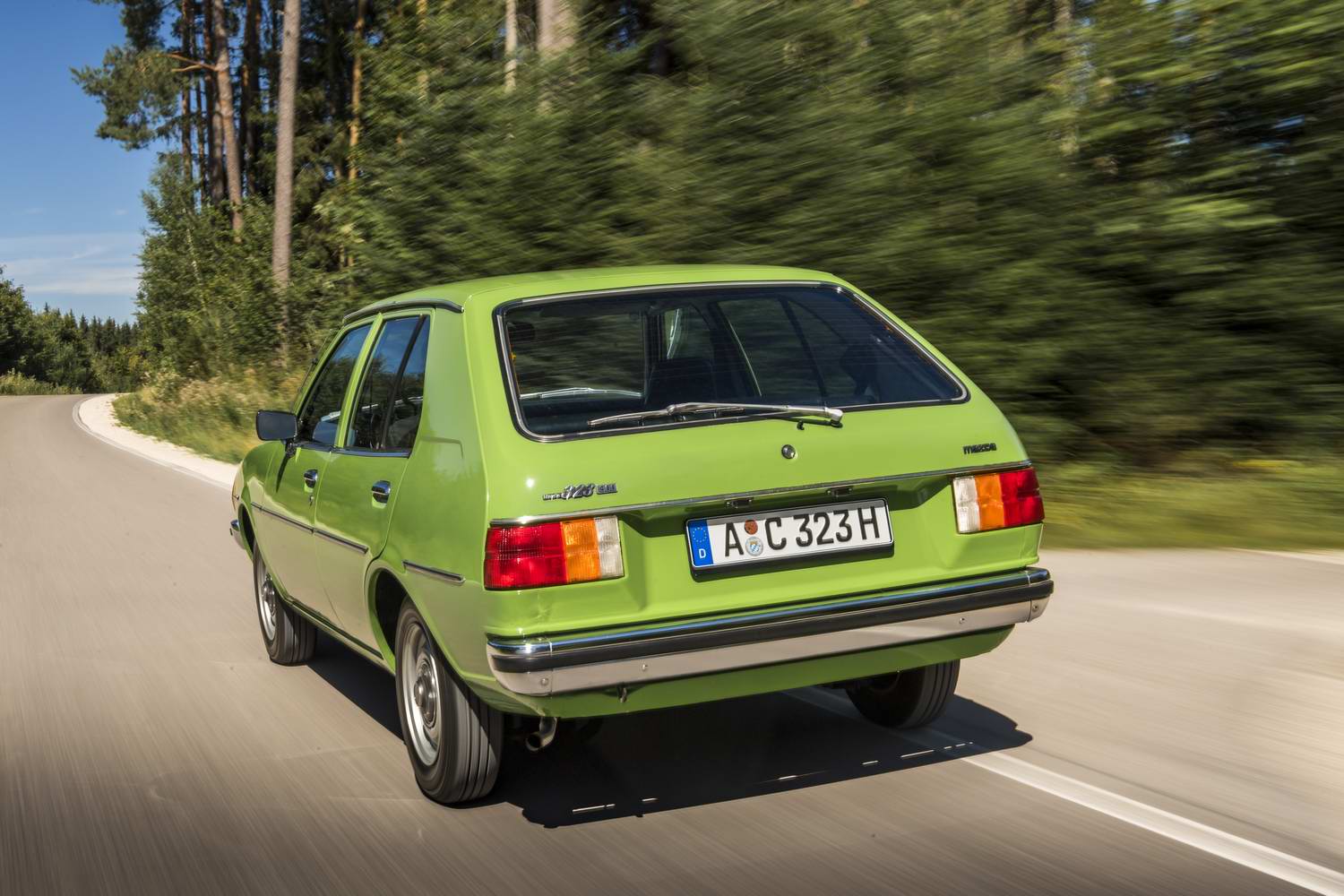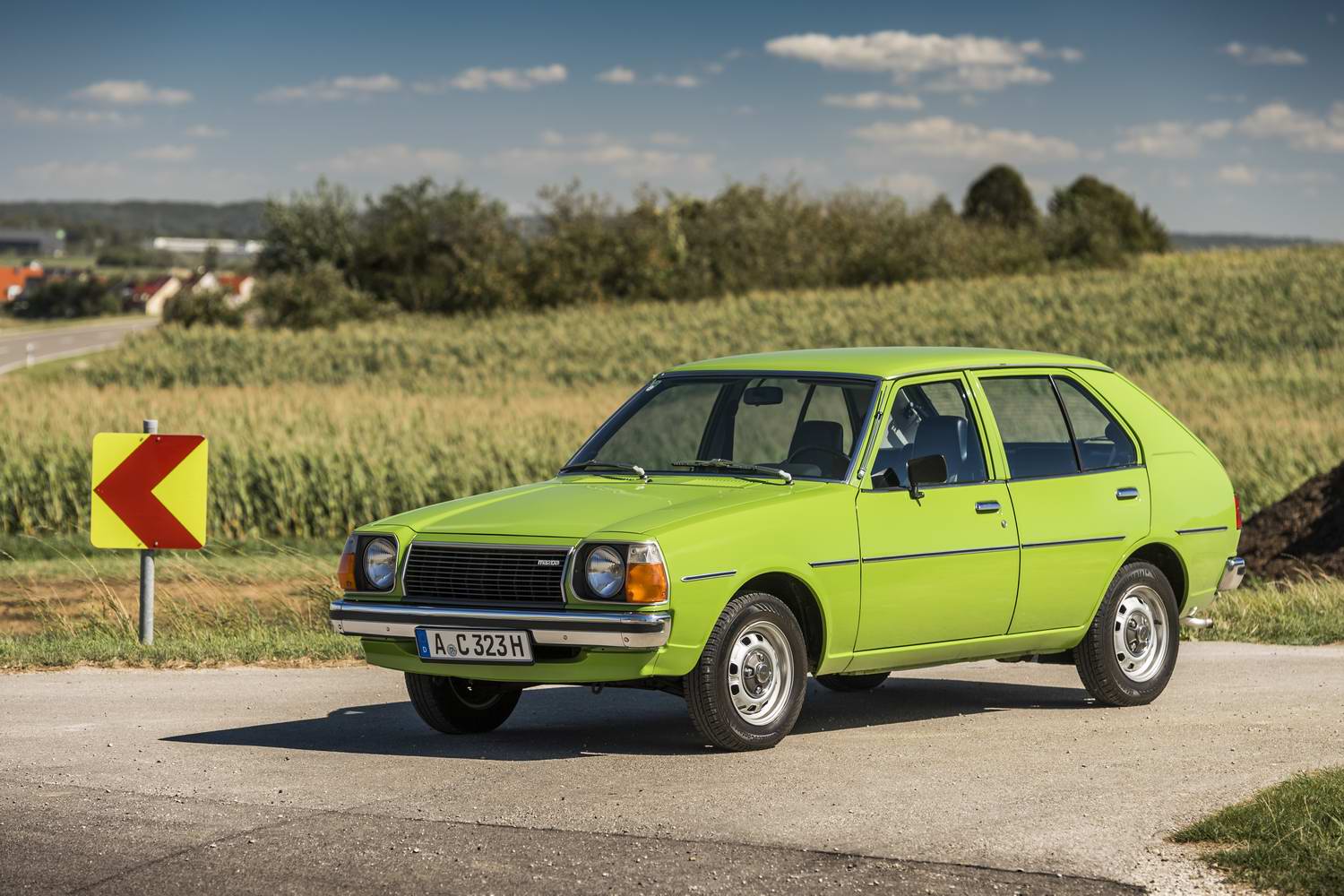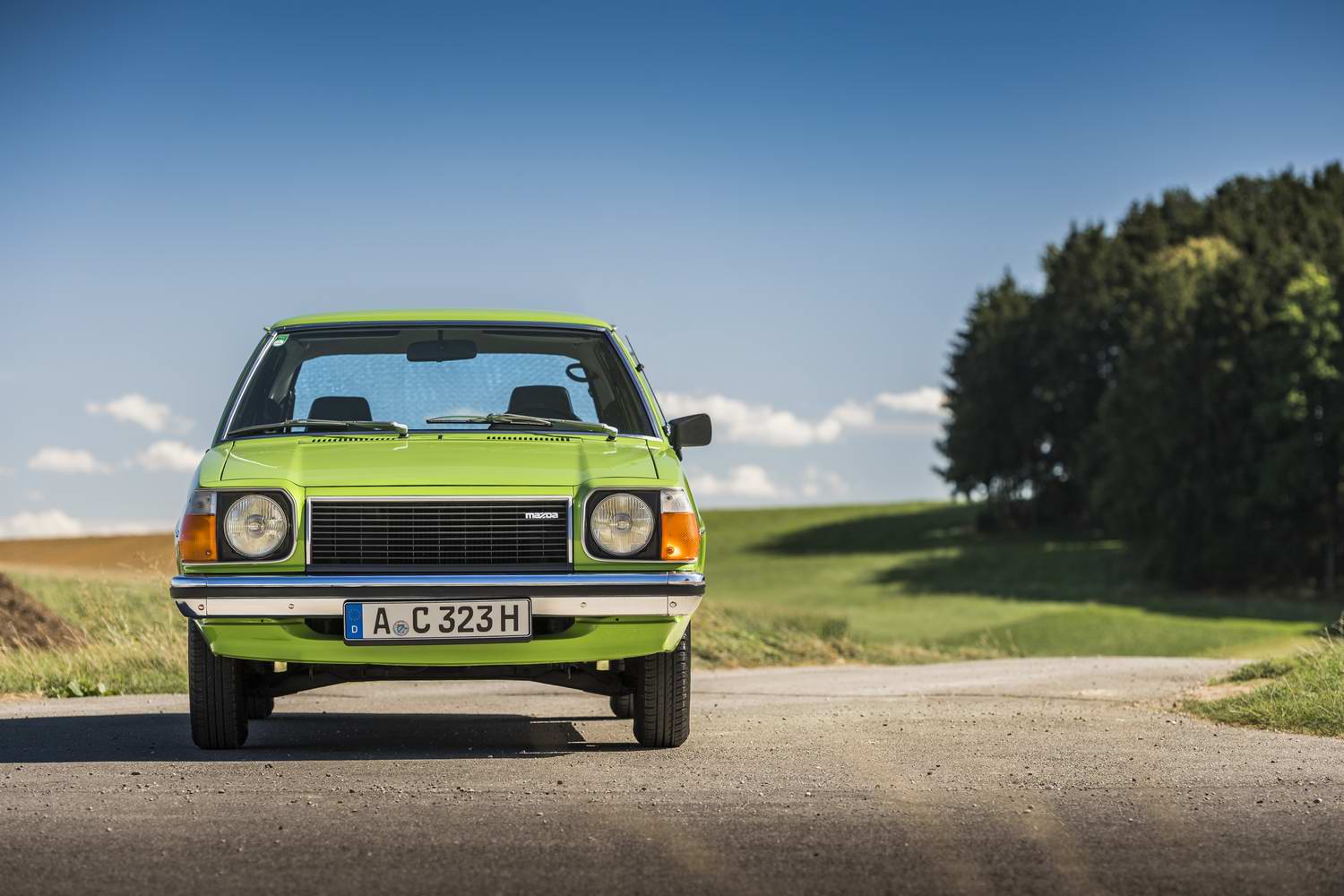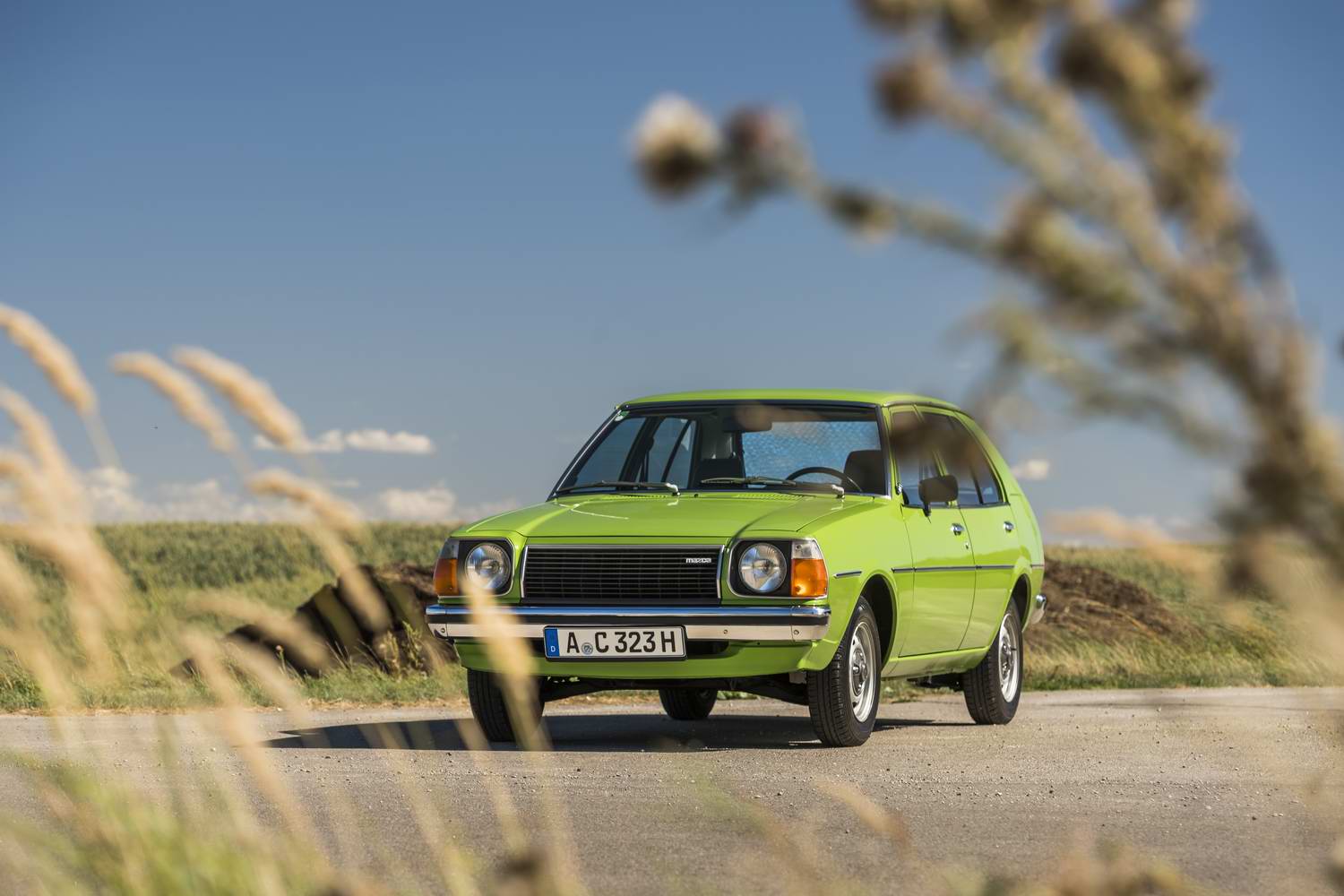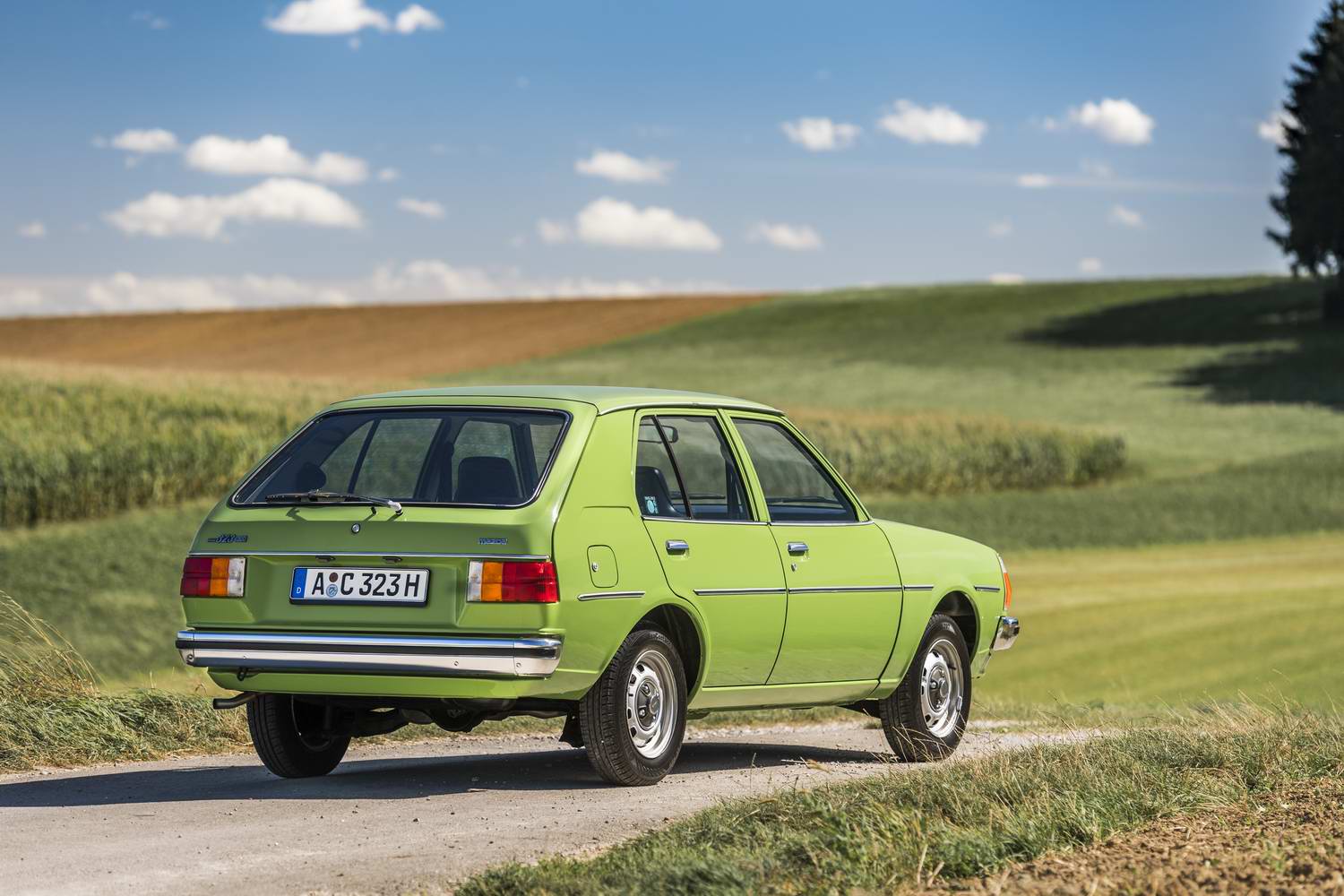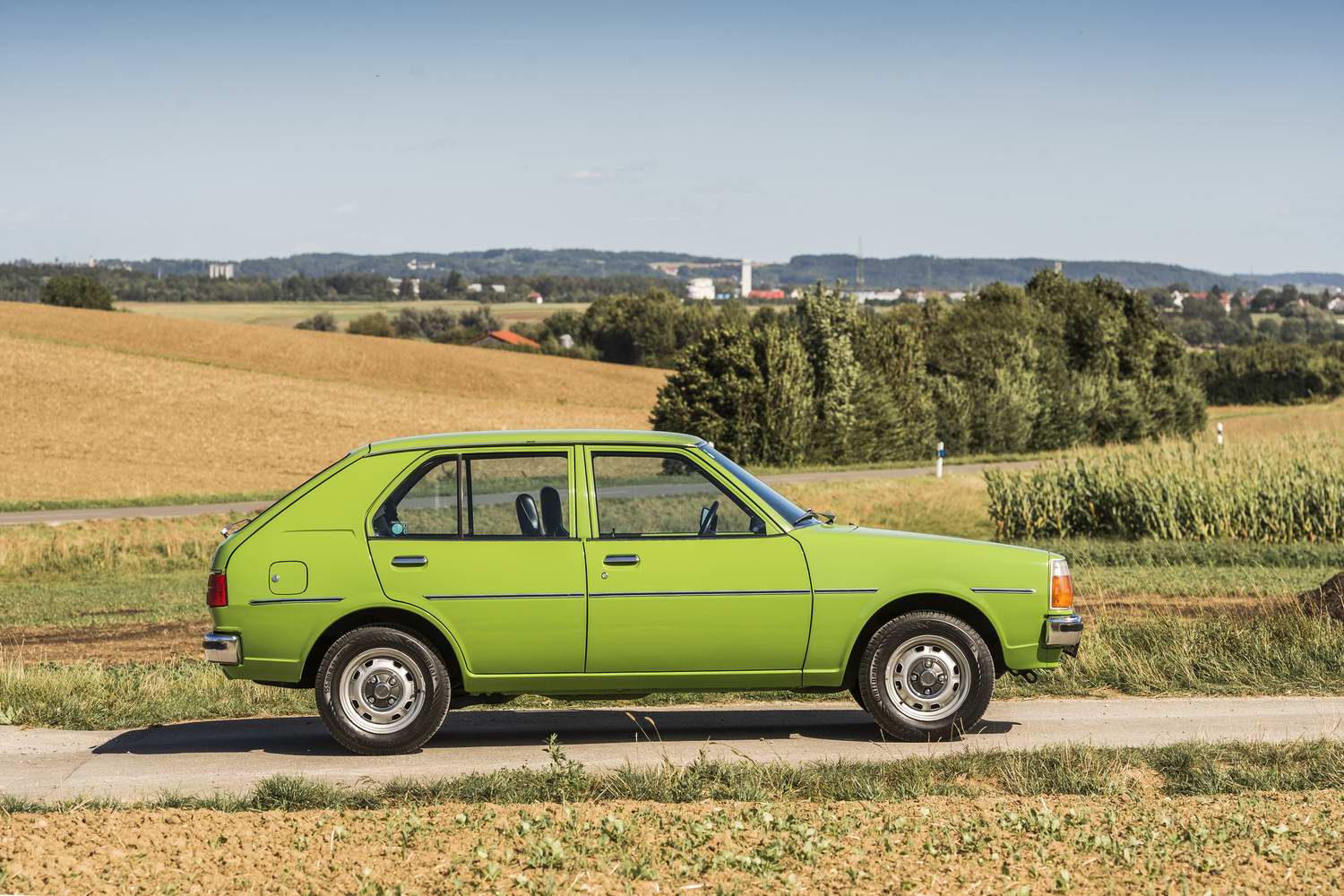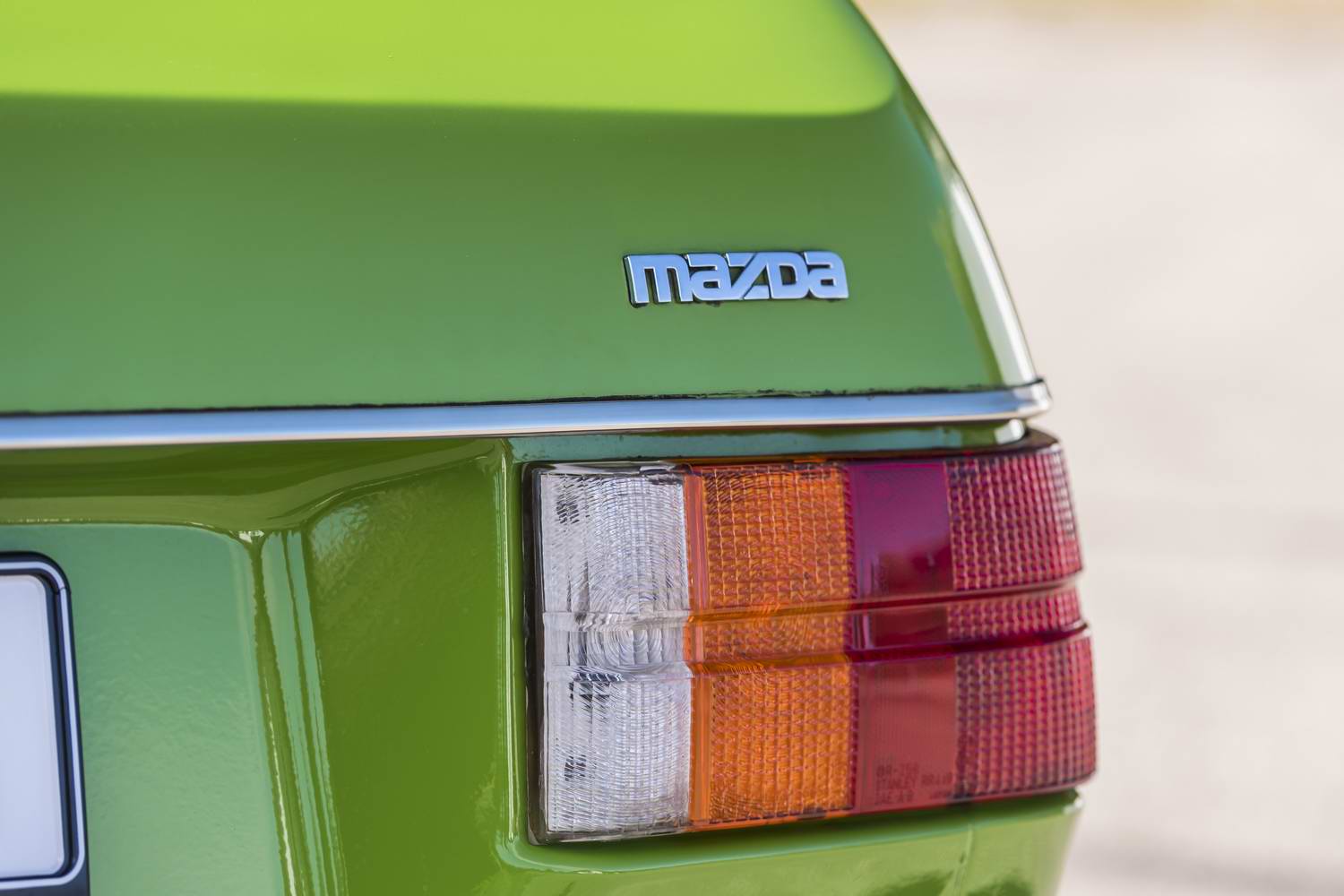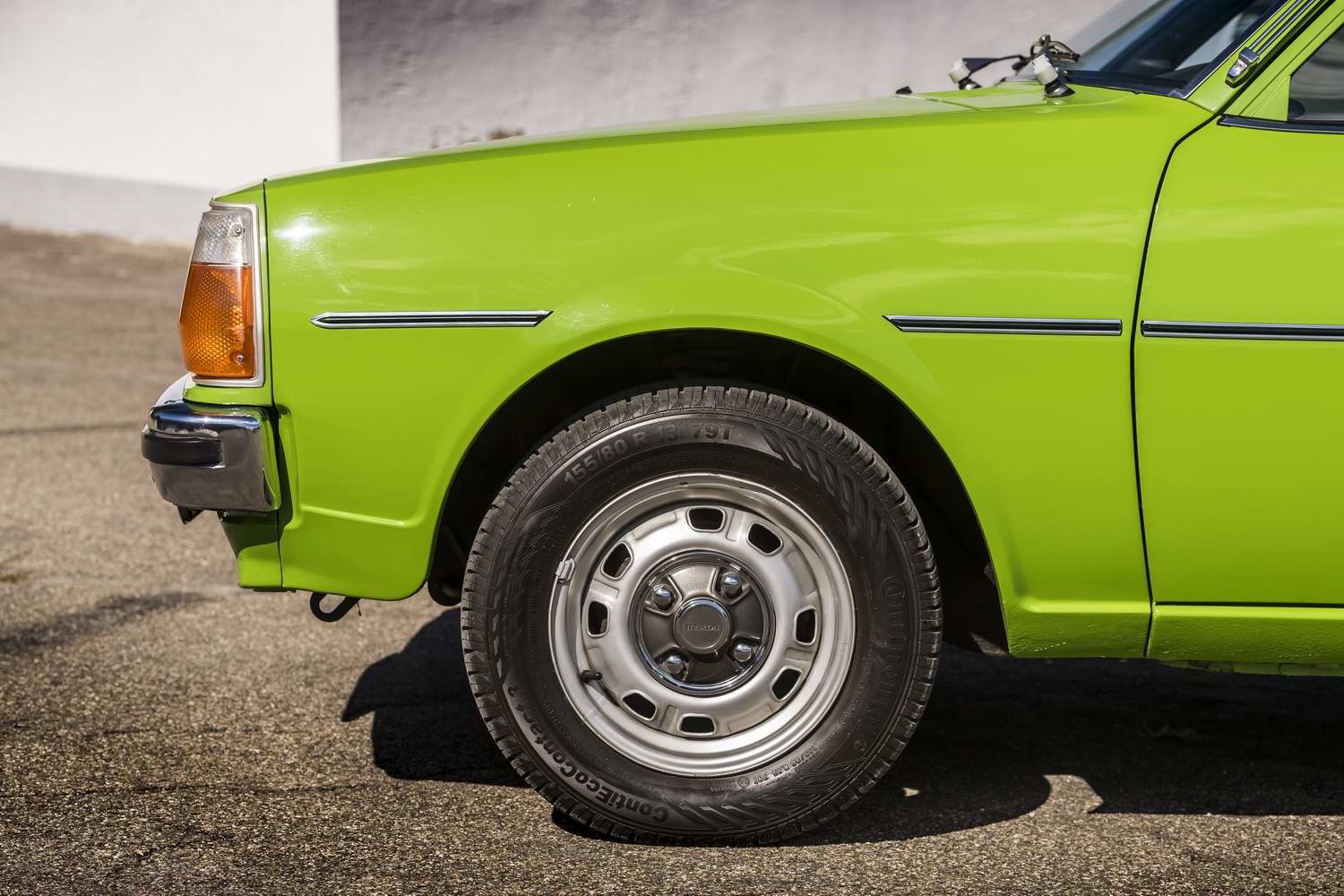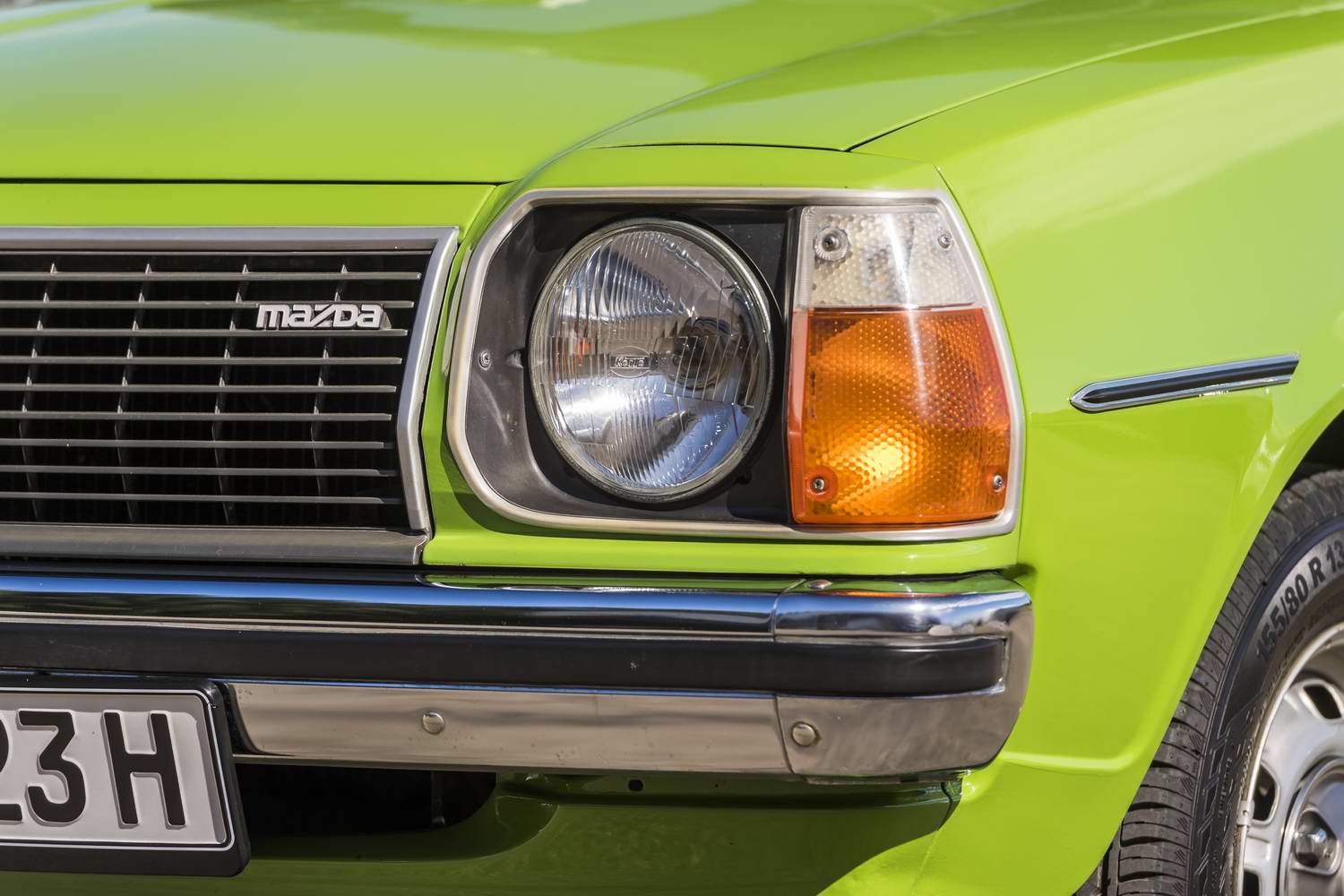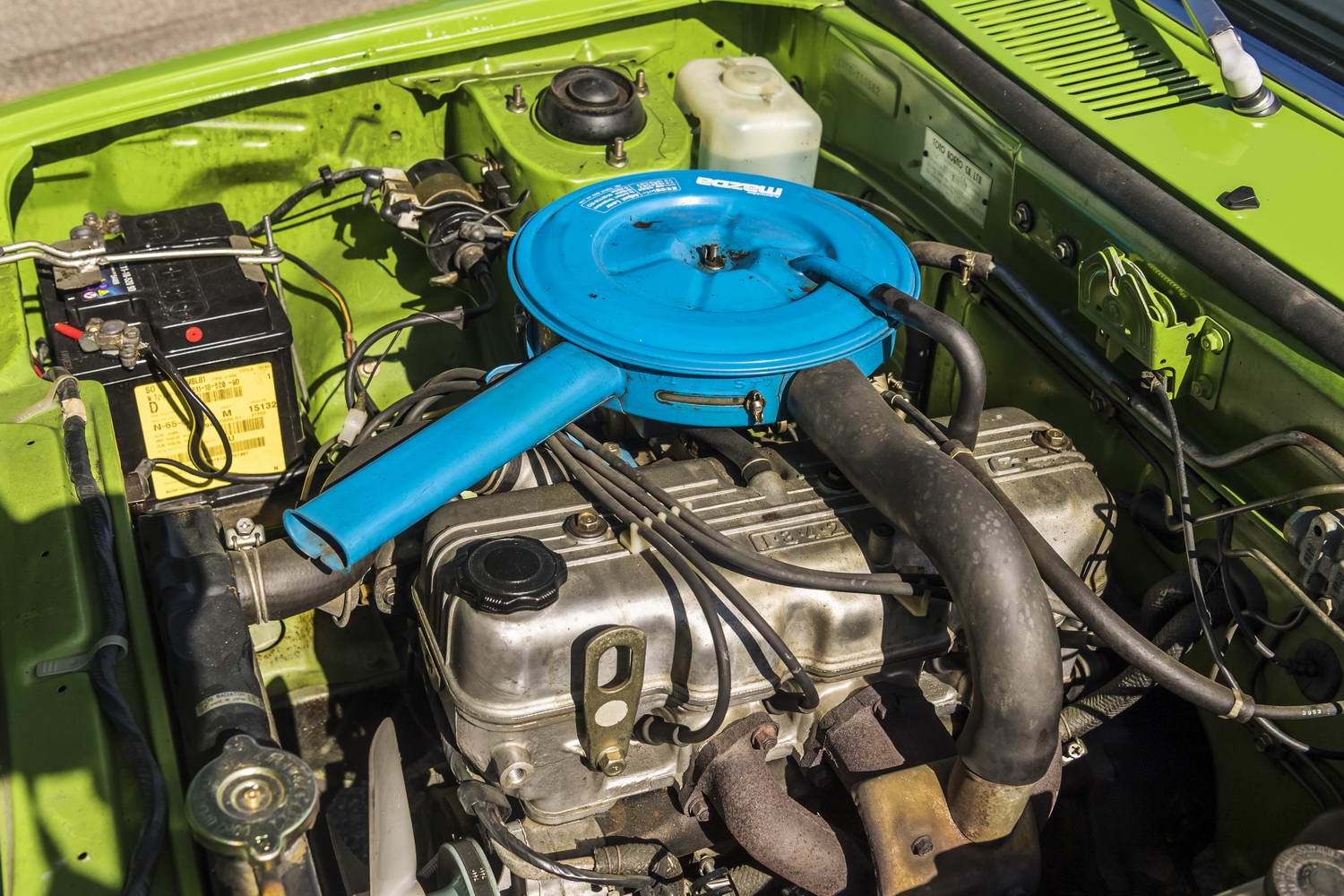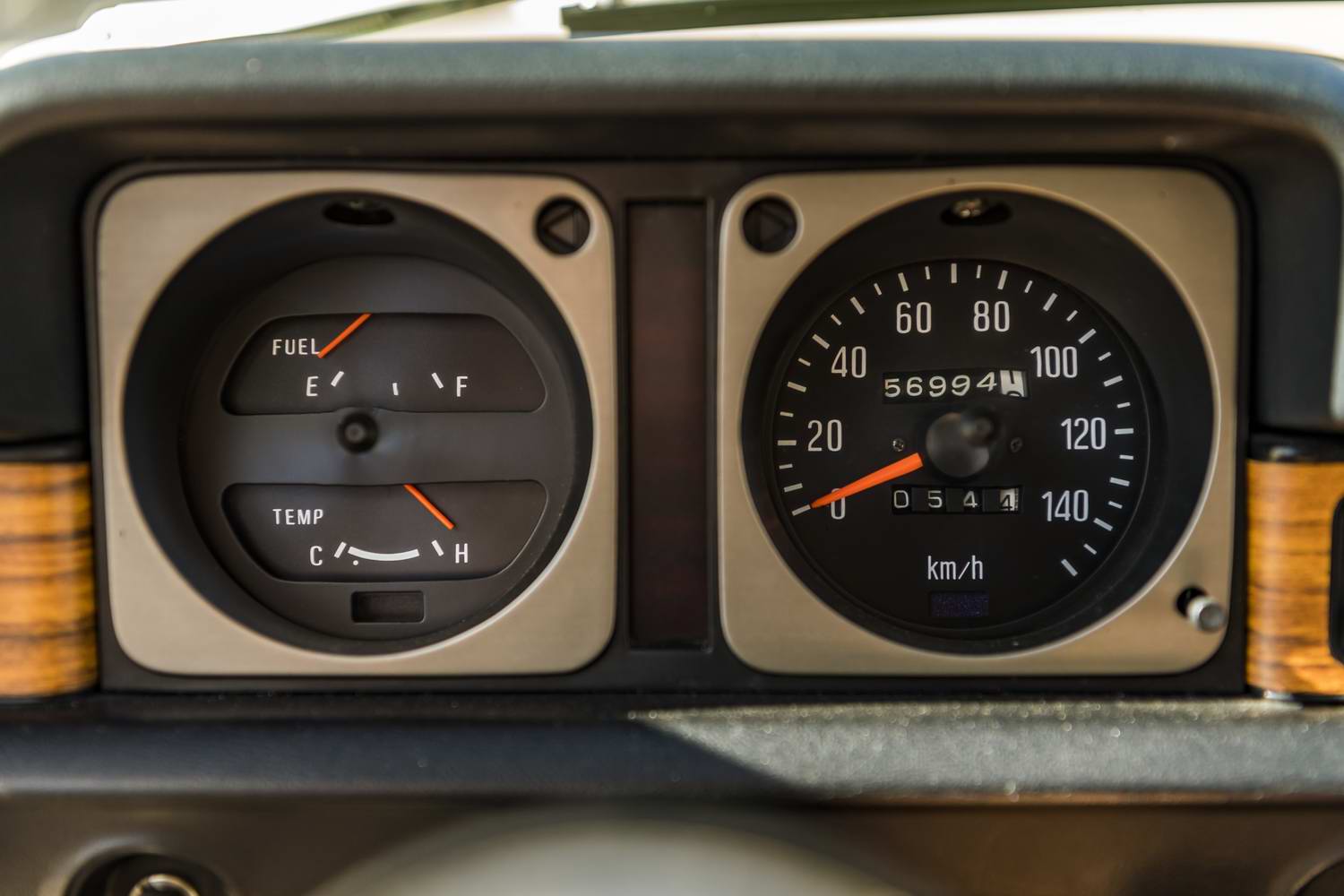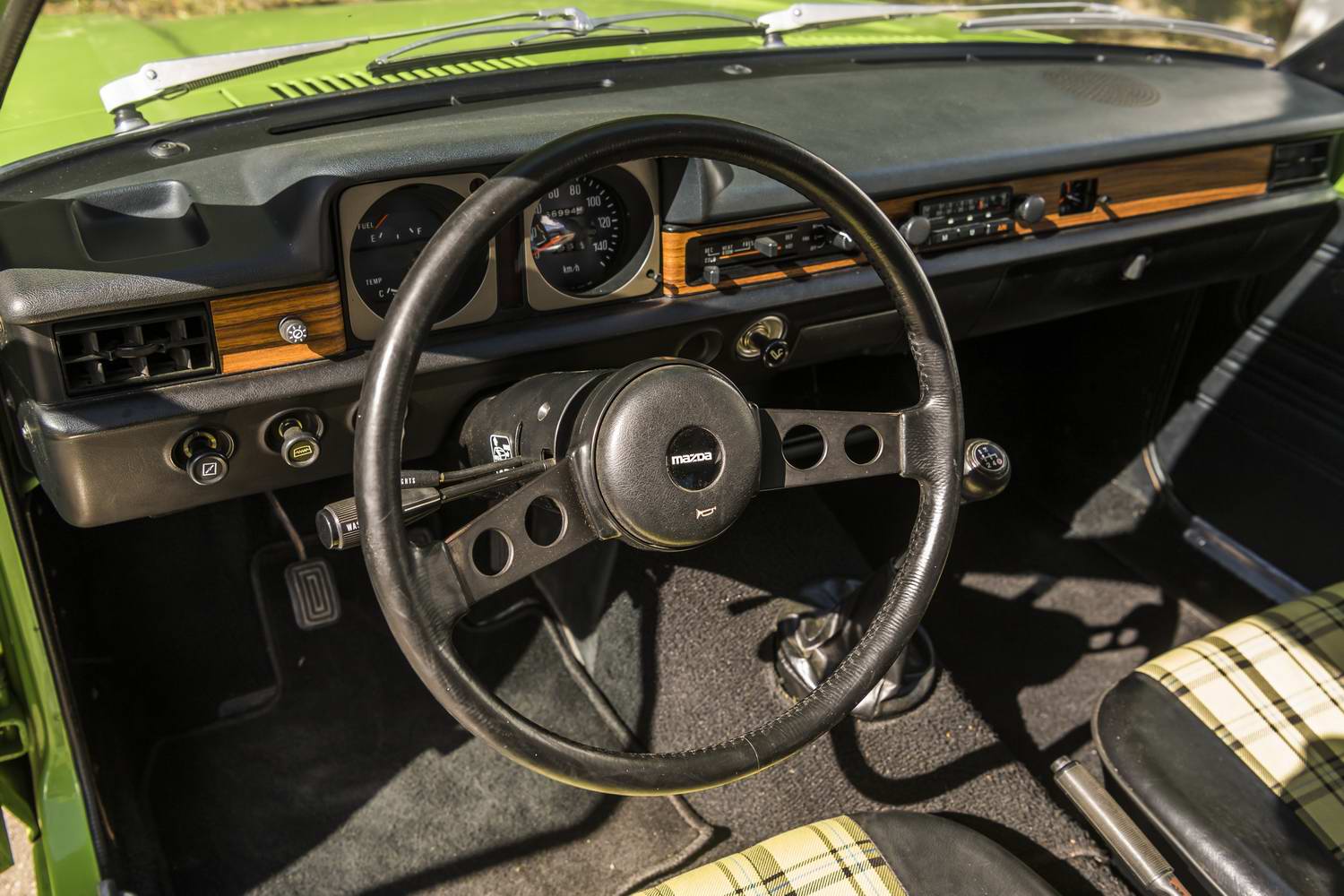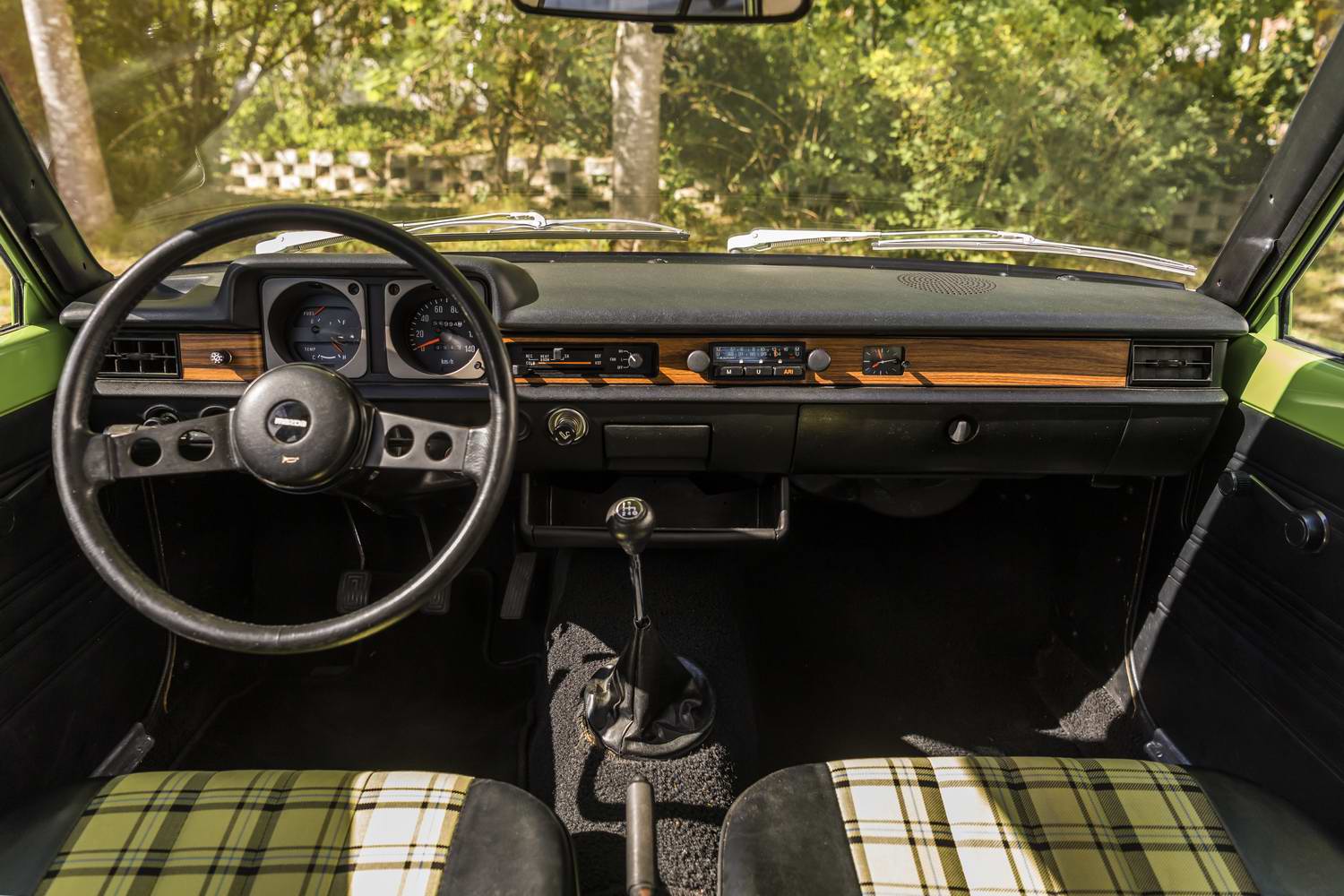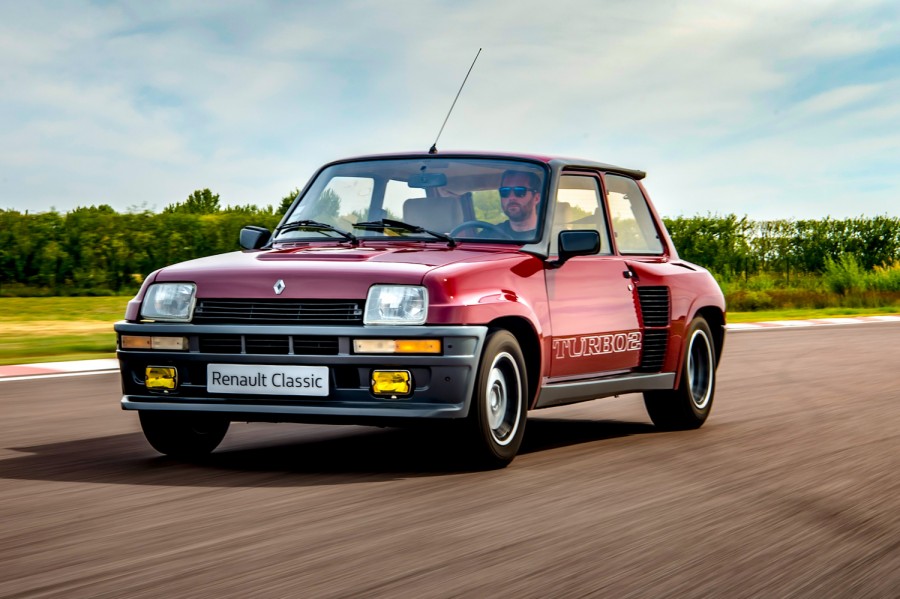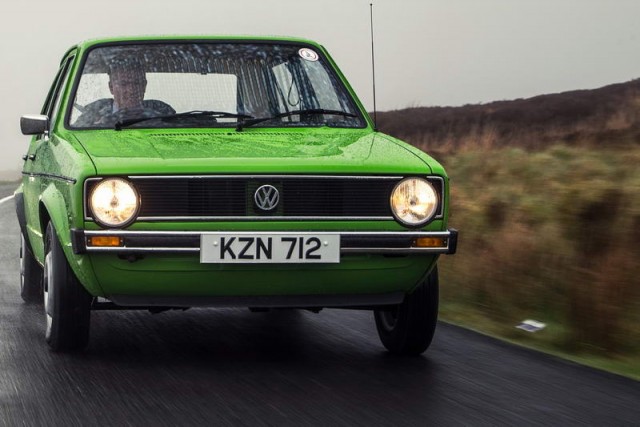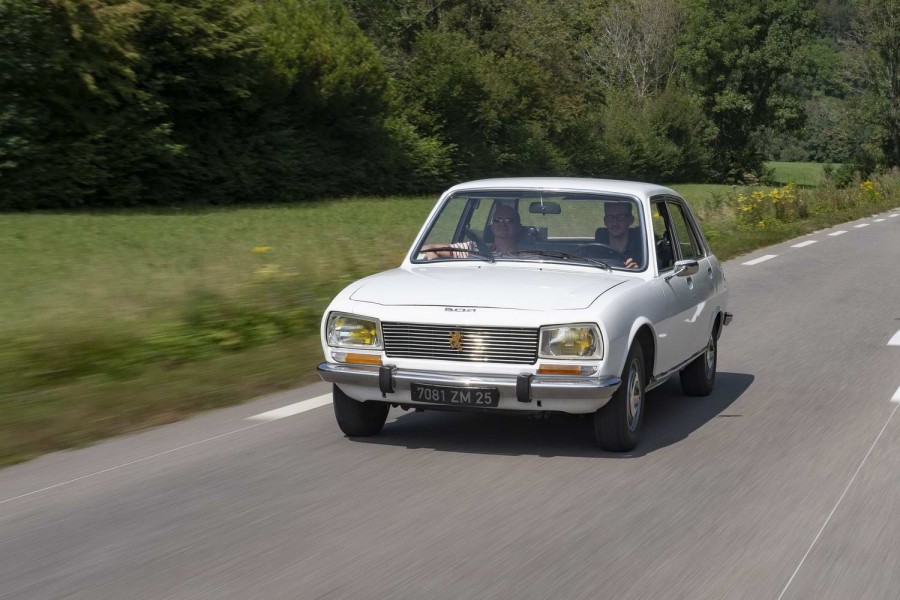What are you driving?
A pea-green sweetheart. This is the first-generation Mazda 323 and the Japanese company's first attempt at the practical, two-box (two-blob?) shape that has become the norm for A-, B- and C-segment cars to this day. Mazda also reckons that the 1977-launched 323 was the first Asian compact machine with a 'fully opening tailgate', which is to say the rear windscreen was part of the entire top-hinged hatchback that swung up when opened, rather than a vehicle where the boot was hinged below the glass screen itself.
Tiny and short-lived - the first-gen 'FA4' only lasted for three years, replaced by the Mk2 'BD' in 1980 - the 323 1300 is one of those cars that once would have been a fairly common sight on most of the world's roads but which is now given a sheen of added desirability because it is so vanishingly rare in 2020. This particular German example, part of Mazda's vast heritage collection housed at the Frey Museum in Augsburg, is a later pre-facelift 1979 car that is distinguished by still having round headlights rather than the succeeding oblong lamps, and it is fitted with the middle rung of three four-cylinder petrol engines offered for the Mk1 - it's a 1.3 with 60hp, but there was also a 1.0-litre unit with a piffling 44hp or a 1.4 that offered up 83hp. It's a five-door model, with both a three-door shell and a wagon sold by Mazda back in the day too.
Mazda had seen the way the land lay in the late 1970s and realised that compact cars needed to be front-wheel drive (FWD) going into the decade of electronic New Romantic music and 'greed is good' excess, so by 1979 it was already a good stretch along the path to the FWD 323 BD that would launch in 1980. The Mk1, however, continued to send its 'power' to the rear axle via a four-speed gearbox, making it not only a car with a limited lifespan but also the only rear-driven hatchback in Mazda's history. And when you see that this was a family vehicle, complete with five doors and space in the back that might possibly accommodate some actual adults (or at least tall teenage kids), but that it's only 3,820mm long, 1,595mm wide and 1,375mm tall on the outside, you realise just how bloated modern cars have become... not to mention safer, of course, which is why they're so much bigger than dinky things like the Mazda 323 in the first place. So while we won't dwell on the negative, safety-related aspects of the 323's diminutive frame, we will at least point out that it only weighs 812kg in this format, which is featherweight stuff, and that it is a showcase of how older, everyday cars were a triumph of spacious packaging in a small road footprint.
Name its best bits
Apart from the beautiful paintwork, offset with the de rigueur wheel-size of the 1970s in the form of 13-inch steelies, and the fabulous, spartan (and tartan, in the case of this particular car's seats) cabin with its functional, no-nonsense layout, the 323 is a lean piece of design. No hatchback is ever what you could call truly gorgeous, although if anything gets close it's one of the two latest generations of the Mazda3, but the clean, unflustered shape of the 323 1300 has matured wonderfully over the course of four decades. Weirdly, in an era when distinctive and advanced LED light signatures are all the rage, it's perhaps odd of us that we really love the sharply delineated rear-lamp clusters of the old Mazda, vertical lines of red, amber and white standing out crisply above a gleaming chrome bumper.
Of course, the 323 doesn't particularly handle brilliantly, despite its rear-driven status, and it was never designed to be rapid (see below), but that doesn't mean that driving it is somehow unpleasant. Old, simple cars like this are refreshingly organic and undemanding in what they ask of you as the driver and it is also a vehicle from the days before dampers ever had to be anything like sporty, so the 323 1300 is the absolute epitome of easy-going. The four-speed gearbox shifts slickly with its long, slender lever, the steering wheel rim is almost impossibly and fantastically thin and delicate, and the Mazda will happily amble along at 100km/h without too much in the way of road, wind or engine noise, while the ride quality knocks the socks off almost any modern hatchback - now so often festooned with 17-, 18- or 19-inch alloys on low-profile tyres for reasons of vain aesthetics alone. Having sampled how charming the green 1300 was in the cut and thrust of 2020 German road traffic, we're now convinced that what Mazda did with the 323 Mk1 for its launch in 1977 would have been no hardship at all: amazingly, representatives from the Japanese company drove one from Hiroshima to Frankfurt for that year's motor show, covering 15,000km across the course of 40 days of travelling. We'd be up for repeating the return journey from Germany to Japan in 2020, Mazda, if you'd like...?
Anything that bugs you?
Well, no, not really, but we're struggling to fathom how Mazda reckons a 60hp car with a four-speed gearbox would have ever been capable of cracking the ten-second barrier for the 0-100km/h sprint, even back in its heyday when all of the horses were still in the stable, if you catch our drift. Entirely understandable that the following statement would be the case when looking at the humble on-paper stats of the 323, but fast, this car is not. Of course, very few 41-year-old hatchbacks go ripping off down the road at an extraordinary rate of knots, but even making all the allowances in the world for the effects of the passage of time on that four-cylinder engine, progress in the 323 1300 is extremely sedate. Lord alone knows what the 1.0-litre model must have felt like...
And why have you given it this rating?
As undeniably lovely as it is today, placed properly in historical context the 323 never quite managed to eclipse the likes of the Toyota Corolla and the Honda Civic in the sales charts (this, despite the fact almost 900,000 units of the 323 were sold globally in just three years), and nor did it revolutionise the automotive industry to any significant degree. That said, the 323 holds a special place in Mazda's historical canon as a transitional, watershed moment, as the company moved away from rear-driven saloons towards front-driven hatchbacks. And, across six generations and 26 years on sale, the 323 lineage paved the way for the Mazda3 we know today. So, the bright green 1300 might not be ground-breaking in any way, save for that full-opening hatch maybe, but it is utterly adorable nonetheless. Not least because it is such a spectacular surviving example of its now-scarce breed.

